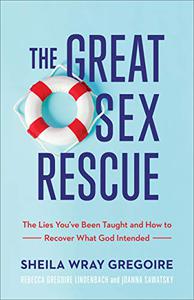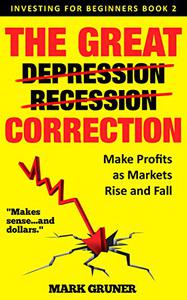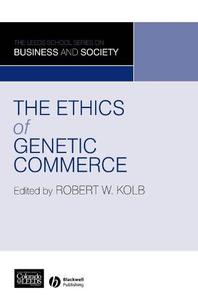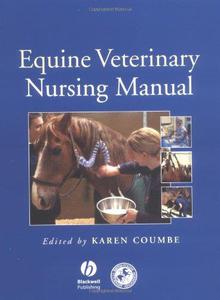

E-Books → The Greatest Revolutionary War Battles The New York-New Jersey Campaign
Published by: voska89 on 2-08-2022, 19:38 |  0
0

The Greatest Revolutionary War Battles: The New York-New Jersey Campaign by Charles River Editors
English | June 12, 2015 | ISBN: 1514319594 | 75 pages | EPUB | 2.47 Mb
*Includes pictures *Includes accounts of the fighting around New York City *Includes online resources and a bibliography for further reading *Includes a table of contents After the siege of Boston forced the British to evacuate that city in March 1776, Continental Army commander George Washington suspected that the British would move by sea to New York City, the next logical target in an attempt to end a colonial insurrection. He thus rushed his army south to defend the city. Washington guessed correctly, but it would be to no avail. Unlike Boston, New York City's terrain featured few defensible positions. The city lacked a high point from which to launch a siege, as the peninsula of Boston was fortunate to have. Moreover, Washington wasn't sure defending the city was necessary, hoping that an expedition launched toward Quebec like the one Benedict Arnold had led in late 1775 would keep the British away from New York anyway. However, Congress thought otherwise, and demanded that Washington defend New York. Washington thus did what he was told, and it nearly resulted in the army's demise. In the summer of 1776, the British conducted the largest amphibious expedition in North America's history at the time, landing over 20,000 troops on Long Island. British General William Howe, who had led the British at Bunker Hill and would later become commander in chief of the armies in North America, easily captured Staten Island, which Washington was incapable of defending without a proper navy. Washington's army attempted to fight, but Washington was badly outmaneuvered, and his army was nearly cut off from escape. The withdrawal across New York City was enormously disorderly, with many of Washington's troops so scared that they deserted. Others were sick as a result of the dysentery and smallpox plaguing the Continental Army in New York. In what was arguably the worst defeat of the Revolution, Washington was ashamed, and he also felt betrayed, by both his troops and Congress. To escape from New York, Washington led a tactical retreat across the East River and off Long Island in the middle of the night without British knowledge. This retreat prevented the annihilation of the colonial army in New York, but with Washington being pushed west across New Jersey and into Pennsylvania, Congress was forced to flee Philadelphia. And with this string of crucial British successes in 1776, the Revolution was on the brink of failure. The Continental Army, now in Pennsylvania, had lost over 5,000 men during its retreat through New York and New Jersey and now had fewer than 5,000 able soldiers. That winter, one of the men in camp, Thomas Paine, would write The American Crisis, beginning with the famous words, "These are the times that try men's souls." However, Washington would famously cross the Delaware River on Christmas night to attack British forces at Trenton, and he was able to compel the British to suspend the winter campaign after fighting around Princeton. Nonetheless, in the early months of 1777, the colonists were in dire straits and the British were Descriptionting a campaign in the coming months to put down the revolution once and for all. The Greatest Revolutionary War Battles: The New York-New Jersey Campaign comprehensively covers the events that led up to the campaign, the fighting itself, and the aftermath of the conflict. Along with maps and pictures of important people, places, and events, you will learn about the campaign like never before, in no time at all.
E-Books → The Great Sex Rescue The Lies You've Been Taught and How to Recover What God Intended
Published by: voska89 on 2-08-2022, 19:37 |  0
0

The Great Sex Rescue: The Lies You've Been Taught and How to Recover What God Intended by Sheila Wray Gregoire
English | March 2, 2021 | ISBN: 1540900827 | 213 pages | PDF | 6.36 Mb
What if it's not your fault that sex is bad in your marriage?
E-Books → The Great Inoculator The Untold Story of Daniel Sutton and his Medical Revolution
Published by: voska89 on 2-08-2022, 19:37 |  0
0

The Great Inoculator: The Untold Story of Daniel Sutton and his Medical Revolution by Gavin Weightman
English | September 22, 2020 | ISBN: 0300241445 | 181 pages | PDF | 5.80 Mb
This timely history of the neglected figure of Daniel Sutton-the medical revolutionary who paved the way for present-day vaccination-was named a best book of 2020 by BBC History Magazine
E-Books → The Great Correction Make Profits as Markets Rise and Fall
Published by: voska89 on 2-08-2022, 19:36 |  0
0

The Great Correction: Make Profits as Markets Rise and Fall by Mark Gruner
English | 2020 | ISBN: N/A | ASIN: B08HHHCCX6 | 107 pages | MOBI | 0.59 Mb
Learn how to make money in any market! There are times to buy and times to sell. Most investors do not know the difference.
E-Books → The Future of Energy
Published by: voska89 on 2-08-2022, 19:36 |  0
0

The Future of Energy by Scientific American Editors
English | July 15th, 2022 | ISBN: 9781466833869 | 180 pages | True EPUB | 2.36 MB
Since the Industrial Revolution our civilization has depended on fossil fuels for energy - first it was coal; then petroleum. If business as usual continues, we are looking at a world where sea levels will be high enough to submerge many coastal cities and extreme weather events like 2012's Hurricane Sandy are the new normal. In this eBook, The Earth, Wind and Fire, we review the energy problem and analyze the options from the mundane to the far out.
E-Books → The Firebombing of Tokyo The History of the U.S. Air Force's Most Controversial Bombing Campaign of World War II
Published by: voska89 on 2-08-2022, 19:35 |  0
0

The Firebombing of Tokyo: The History of the U.S. Air Force's Most Controversial Bombing Campaign of World War II by Charles River Editors
English | June 22, 2015 | ISBN: 1514609045 | 70 pages | EPUB | 3.58 Mb
*Includes pictures *Includes accounts of the firebombing by both Americans and Japanese civilians in Tokyo *Includes online resources and a bibliography for further reading *Includes a table of contents "Maj. Gen. Curtis E. LeMay, commander of the B-29s of the entire Marianas area, declared that if the war is shortened by a single day, the attack will have served its purpose." - The New York Times As American forces pushed the Japanese back across the Pacific from 1942-1944, their island-hopping campaign ultimately made it possible for the Air Force to conduct bombing runs over the Japanese mainland. The first serious air raids came in November 1944, after the Americans had captured the Marianas Islands, and through February 1945, American bombers concentrated on military targets at the fringes of the city, particularly air defenses. However, the air raids of March 1945, and particularly on the night of March 9, were a different story altogether. In what is generally referred to as strategic or area bombing, waves of bombers flew low over Tokyo for over two and a half hours, dropping incendiary bombs with the intention of producing a massive firestorm. The American raids intended to produce fires that would kill soldiers and civilians, as well as the munitions factories and apartment buildings of those who worked in them. 325 B-29s headed toward Tokyo, and nearly 300 of them dropped bombs on it, destroying more than 267,000 buildings and killing more than 83,000 people, making it the deadliest day of the war. The firebombing that night and morning left 25% of Tokyo charred, with the damage spread out over 20 miles of the metropolis. In fact, the damage was so extensive that casualty counts range by over 100,000. Additional raids, this time largely on the north and west, came in April, and in May, raids hit Ginza and the south. Altogether, American bombers flew more than 4,000 missions over Tokyo before surrender. The damage was spread widely, but it was worst in the low city, where some neighborhoods were virtually depopulated as survivors fled to the relative safety of the countryside. Honjo and Fukagawa each lost roughly 95% of their pre-raid populations. In 1940, Tokyo was a city of perhaps 6.8 million, but two years after the end of the war, when the population had already begun to increase again, it was still no more than 4.1 million. As with dropping the atomic bombs on Hiroshima and Nagasaki, the firebombing of Tokyo has remained controversial since the end of World War II. Japan had wisely spread out its industrial facilities across Tokyo so that one concerted attack could not deal a severe blow to its military capabilities. However, by spreading everything out, as the Germans had also done, Allied planes hit targets in residential zones, greatly increasing the casualties. Thus, by destroying as much of Tokyo's wartime manufacturing as possible, the American air force also destroyed half the city. Of course, it's far easier with the advantage of hindsight for people to call the campaign disproportionate, especially since the bombing campaign came at a time when the United States still faced the dreadful prospect of invading Japan's mainland. In 2007, Japanese Prime Minister Abe Shinzo took responsibility for Japan's refusal to surrender when defeat was inevitable, thus placing the blame for the firebombing on Japan itself. Shinzo announced that Japan would financially compensate survivors and bereaved family members of those killed, and shortly after the announcement, 112 survivors filed a lawsuit seeking damages for damage done during the campaign. The Firebombing of Tokyo: The History of the U.S. Air Force's Most Controversial Bombing Campaign of World War II chronicles the background of the campaign, its destruction, and its notorious legacy. Along with pictures of important people, places, and events, you will learn about the firebombing of Tokyo like never before, in no time at all.
E-Books → The Everything New AMISH PICKLES CANNING COOKBOOK
Published by: voska89 on 2-08-2022, 19:34 |  0
0

Elizabeth Rowland , "The Everything New AMISH PICKLES CANNING COOKBOOK"
English | 2022 | ASIN: B0B6LR3XLG, B0B6KXWMV1 | EPUB | pages: 44 | 0.1 mb
Food рrеѕеrvаtіоn has bееn an іmроrtаnt раrt оf humаn сulіnаrу сulturе throughout human history, as іt саn еnѕurе the ѕаfеtу and security оf fооd. Cаnnіng, smoking, drуіng, fеrmеntіng, and frееzіng fооd are ѕоmе оf the сlаѕѕіс fооd рrеѕеrvаtіоn techniques whісh hаvе bееn in uѕе ѕіnсе tіmе іmmеmоrіаl. In ancient times, when thеrе wеrе nо other modern ѕtоrаgе tесhnіԛuеѕ, thе саnnіng mеthоd wаѕ widely uѕеd to рrеѕеrvе food fоr mоnthѕ. Pісklіng was асtuаllу dеrіvеd from the саnnіng techniques.
E-Books → The Ethics of Genetic Commerce
Published by: voska89 on 2-08-2022, 19:34 |  0
0

The Ethics of Genetic Commerce By
2007 | 233 Pages | ISBN: 1405166983 | PDF | 2 MB
Our rapidly expanding genetic knowledge today points toward a near future in which the elements of humanity closest to our moral core may themselves be produced, manipulated, commodified, and exchanged. Explores the moral and ethical concerns derived from an increasing knowledge of genetics and the variety of its commercial applications A major contribution to the emerging understanding of the role that ethics will play in genetic commerce Written by experts from the academic and corporate sector, with diverse backgrounds in business, social science, and philosophy Addresses a range of relevant issues, including genetic screening, the use of individual's genetic information, the rise of genetically modified foods, patenting, pharmaceutical mergers and monopolization, and the implications of genetic testing on non-human mammalsContent: Chapter 1 Is a Genetics Screening Program for Job Applicants Ethical? An Analysis of the Conditions Necessary for Requiring Genetic Screenings in the Hiring Process (pages 3-24): Thomas HarterChapter 2 The Business Ethics of Genetic Screening (pages 25-41): Duane WindsorChapter 3 Genetic Commerce: The Challenges for Human Resource Management (pages 42-54): Karen S. Markel and Lizabeth A. BarclayChapter 4 Geneticize Me! The Case for Direct?to?Consumer Genetic Testing (pages 55-69): Ronald MunsonChapter 5 Proscription, Prescription, or Market Process? Comments on Genetic Screening (pages 70-83): Eugene HeathChapter 6 Transgenic Organisms, the European Union, and the World Trade Organization (pages 87-108): Dennis CooleyChapter 7 Commercialization of the Agrarian Ideal and Arguments Against the New "Green Revolution": Feeding the World with "Frankenfoods"? (pages 109-126): Johann A. KlaassenChapter 8 Corporate Decisions About Labeling Genetically Modified Foods (pages 127-138): Chris MacDonald and Melissa WhellamsChapter 9 Moral Imagination, Stakeholder Engagement, and Genetically Modified Organisms (pages 139-142): Denis G. ArnoldChapter 10 Who Owns My Ideas About Your Body? (pages 145-176): Asher MeirChapter 11 Pharmaceutical Mergers and Genetic Technology: A Problematic Combination (pages 177-189): Michael PottsChapter 12 Stakeholder Care Theory: The Case of Genetic Engineering and Non?Human Mammals (pages 190-207): Jamie R. HendryChapter 13 Unresolved Issues and Further Questions: Meir, Potts, and Hendry (pages 208-213): Laura Hartman
E-Books → The Essential Blood Sugar Diet Meals For One
Published by: voska89 on 2-08-2022, 19:33 |  0
0

The Essential Blood Sugar Diet Meals For One: A Quick Start Guide To Cooking On The Blood Sugar Diet. Over 80 Easy And Delicious Calorie Counted ... Lose Weight And Rebalance Your Blood Sugar. by Quick Start Guides
English | August 26, 2016 | ISBN: 1911492012 | 116 pages | EPUB | 0.43 Mb
With plenty of delicious recipes to choose from, this Blood Sugar Diet Meals For One recipe book is a handy resource for anyone beginning the blood sugar diet and looking for great recipes!
E-Books → The Equine Veterinary Nursing Manual
Published by: voska89 on 2-08-2022, 19:33 |  0
0

The Equine Veterinary Nursing Manual By
2001 | 460 Pages | ISBN: 0632057270 | PDF | 6 MB
Endorsed by the British Equine Veterinary Association, this book aims to cover the syllabus for the new RCVS equine veterinary nursing certificate. It covers subjects such as medical and surgical equine nursing, basic equine management and the theory underpinning these topics. It also includes chapters on nutrition, imaging and anatomy and physiology not previously well covered for the equine at a level appropriate for nurses. The approach is practical and the book is laid out in a user-friendly manner with copious illustrations. Content: Chapter 1 Basic Management (pages 1-24): L. C. Marlborough and D. C. KnottenbeltChapter 2 Anatomy and Physiology (pages 25-73): P. D. Clegg, C. L. Blake, R. C. Conwell, E. Hainisch, A. Newton, E. M. Post, M. J. Senior, S. L. Taylor and A. J. WiseChapter 3 Genetics (pages 74-80): G. A. MunroeChapter 4 Reproduction (pages 81-100): J. F. PycockChapter 5 Nutrition (pages 101-125): P. A. HarrisChapter 6 Clinical Nutrition (pages 126-139): P. A. Harris and J. M. NaylorChapter 7 Basic First Aid (pages 140-161): N. E. Haizelden and H. J. HangartnerChapter 8 General Nursing (pages 162-174): R. J. BaxterChapter 9 Safety Management in the Practice (pages 103-184): A. Jones and E. R. J. CauvinChapter 10 Basic Hospital Practice (pages 185-195): J. MastersChapter 11 Medicines and Their Management (pages 196-204): R. J. Baxter and R. D. JonesChapter 12 Laboratory Diagnosis (pages 205-227): L. L. Hillyer and M. H. HillyerChapter 13 Fluid Therapy (pages 228-248): J. C. Boswell and M. C. SchrammeChapter 14 Medical Nursing (pages 249-283): J. D. SlaterChapter 15 Foal Nursing (pages 284-297): S. J. StonehamChapter 16 Lameness and Orthopaedic Nursing (pages 298-322): E. Jones and T. J. PhillipsChapter 17 Diagnostic Imaging (pages 323-361): E. R. J. CauvinChapter 18 General Surgical Nursing (pages 362-381): D. Lloyd and B. M. MillarChapter 19 Theatre Practice (pages 382-413): D. P. McHughChapter 20 Anaesthesia (pages 414-437): J. C. Murrell and C. B. Johnson



